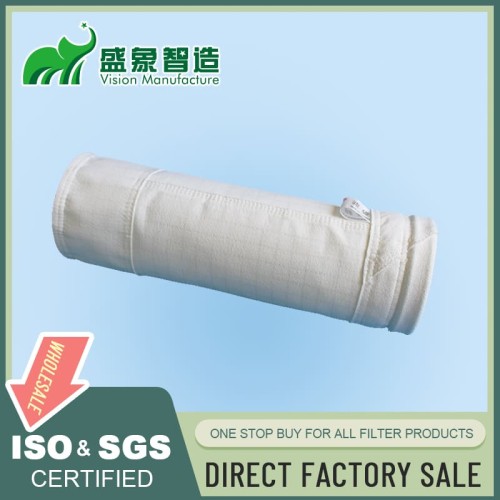
Dust Sock Filters Improve Air Quality in Industrial Settings
I. Introduction
In industrial environments, effective dust control is essential not only for maintaining air quality but also for ensuring workplace safety and prolonging equipment longevity. This section introduces dust sock filters, highlighting their impact on improving air quality and their critical role in industrial settings.
II. Dust Sock Filter Technology
Dust sock filters utilize advanced filtration mechanisms to capture airborne particulates:
- Basic Principles of Operation: Explains how dust sock filters trap and contain dust particles.
- Types of Dust Sock Filters: Discusses various designs and their specific applications.
- Filtration Mechanisms: Details the technology behind the efficient capture of particulates.
III. Applications in Various Industries
Dust sock filters are versatile and find applications across multiple sectors:
- Woodworking and Furniture Manufacturing: Captures wood dust, which can be hazardous to health.
- Metalworking and Fabrication: Filters metal particulates, preventing them from entering the air.
- Food Processing and Packaging: Ensures particulate-free environments to maintain food safety.
- Pharmaceutical Production: Critical for controlling contaminants in highly regulated environments.
- Textile Manufacturing: Removes fibers and particulates during production.
- Plastics and Composites Industry: Filters out fine plastic particulates that could affect product quality and worker health.
IV. Material Options
Choosing the right material for dust sock filters is crucial for performance:
- Polyester Dust Socks: Popular for their durability and efficiency.
- Polypropylene Options: Known for chemical resistance and lower static charge.
- Nylon Dust Socks: Offers excellent abrasion resistance and flexibility.
- Specialty Materials for Specific Applications: Materials tailored for unique environmental or chemical exposures.
V. Design and Sizing
The design and sizing of dust sock filters are tailored to meet specific industrial needs:
- Standard Sizes and Shapes: Fit most existing systems to facilitate easy upgrades.
- Custom Design Possibilities: Tailored solutions that address unique challenges.
- Considerations for Different Dust Types: Designs vary depending on the type of particulates.
- Airflow and Capacity Calculations: Ensures that filters handle the required volume of air efficiently.
VI. Installation Techniques
Proper installation is crucial for the optimal performance of dust sock filters:
- Proper Mounting Procedures: Ensures the filters are securely installed.
- Ensuring Airtight Connections: Prevents any bypass of unfiltered air.
- Integration with Existing Systems: Compatibility checks to ensure seamless operation.
- Initial Setup and Testing: Verifies that the system is functioning correctly from the start.
VII. Maintenance Procedures
Effective maintenance extends the life and functionality of dust sock filters:
- Regular Inspection Routines: Scheduled checks to ensure optimal performance.
- Cleaning Methods and Frequency: Guidelines for maintaining filter efficiency.
- Replacement Indicators: Knowing when to replace filters to maintain system integrity.
- Troubleshooting Common Issues: Addressing typical problems to minimize downtime.
VIII. Performance Metrics
Key performance metrics for dust sock filters include:
- Filtration Efficiency Ratings: Measures the percentage of particles captured by the filter.
- Dust Holding Capacity: Indicates how much dust the filter can hold before performance is impacted.
- Pressure Drop Characteristics: Assesses the impact of the filter on system airflow.
- Airflow Maintenance Over Time: Ensures that airflow remains consistent, even as the filter captures more particulates.
IX. Regulatory Compliance
Dust sock filters help facilities meet stringent regulatory requirements:
- OSHA Air Quality Standards: Ensures compliance with workplace safety regulations.
- EPA Emissions Regulations: Meets environmental standards for particulate emissions.
- Industry-specific Requirements: Addresses additional standards relevant to specific sectors.
- International Standards and Certifications: Complies with global safety and quality benchmarks.
X. Cost-Effectiveness
Analyzing the cost-effectiveness of dust sock filters involves:
- Initial Investment Considerations: Balancing upfront costs with long-term benefits.
- Operational Cost Savings: Reductions in maintenance and energy consumption.
- Energy Efficiency Improvements: Enhancements that reduce overall energy use.
- Long-term ROI Analysis: Evaluating the return on investment based on improved air quality and reduced health risks.
XI. Environmental Impact
Using dust sock filters has a positive environmental impact by:
- Reduced Airborne Particulate Emissions: Minimizes pollutants released into the environment.
- Energy Consumption Reduction: Enhances system efficiency, leading to lower energy use.
- Waste Minimization Strategies: Promotes practices that reduce the volume of waste generated.
- Recyclability of Filter Materials: Encourages the use of sustainable materials in filter production.
XII. Success Stories
Case studies from various industries demonstrate the effectiveness of dust sock filters in enhancing air quality, solving specific challenges, and delivering quantifiable improvements.
XIII. Technological Advancements
Future developments in dust sock filter technology include:
- Smart Monitoring Systems for Dust Socks: Enables real-time performance tracking and maintenance alerts.
- Self-cleaning Filter Technologies: Innovations that reduce maintenance requirements.
- Integration with Building Management Systems: Enhances overall building efficiency and air quality management.
- Advanced Materials for Improved Performance: Developments in filter media that offer higher efficiency and durability.
XIV. Conclusion
Dust sock filters are essential components in maintaining optimal air quality in industrial settings. With their ability to adapt to various applications and their effectiveness in particle removal, they continue to be a preferred choice for industries aiming to enhance their environmental compliance and operational efficiency. As filtration technology evolves, these filters are poised to play an even more crucial role in industrial air quality management.
Leave a comment

